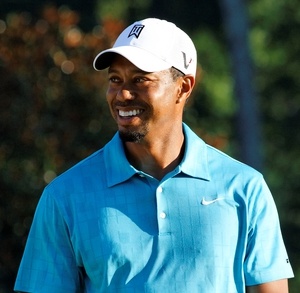 As of this writing, Tiger Woods stands four professional major championships shy of matching Jack Nicklaus’ all-time record of 18. He may or may not catch the Golden Bear, but Woods’ place as one of the five greatest golfers in history was secured years ago.
As of this writing, Tiger Woods stands four professional major championships shy of matching Jack Nicklaus’ all-time record of 18. He may or may not catch the Golden Bear, but Woods’ place as one of the five greatest golfers in history was secured years ago.
Of all the amazing things marking Woods’ career, it’s hard to believe he’s won under the tutelage of three different teachers. Of course, 71 of his 72 PGA Tour victories to date came while Woods worked with Butch Harmon and Hank Haney. It remains to be seen whether his latest guru, Sean Foley, will guide Woods to similar results.
Thus far, none of Woods’ teachers has cured him of a flaw that seems to crop up time and again.
Unconventional move: On the downswing, especially when hitting the driver, the level of Woods’ head and upper body dip noticeably toward the ground.
Who else does it: Rory McIlroy
It’s hard to find much wrong with Woods’ swing, which features textbook positions at nearly every station. But he does have a habit of dipping on the downswing, which actually emanates from a deep bend at the knees. In fact, Woods appears to crouch as he begins the downswing, then raise up as he approaches contact.
Why it’s a problem for amateurs: While the old adage “keep your head still” has been widely debunked, instructors often recommend keeping the head as level as possible throughout the swing. This keeps the spine angle constant and the clubhead tracking toward the ball on the downswing, aiding solid ballstriking.
Unlike Woods, the amateur whose head level drops is typically bending over from the waist. This can toss the club wildly off line, causing an over-the-top path (slices and pulls), contact all over the clubface, fat shots, and a loss of power.
How Woods gets away with it: Actually, Tiger’s downswing dip often creates major miscues. Because his entire body is sinking, including his shoulders, Woods is left with less room to maneuver the club toward the ball. The result is his famous “stuck” position, where Woods’ arms and hands are too far behind his ultra-fast lower body. His huge misses to the right occur when Tiger’s arms can’t catch up with the hips by impact; conversely, he misses left when he attempts to save the shot with a violent, last-instant flip of the hands.
That said, the dip doesn’t always lead to disaster. In fact, when timed properly this move creates enormous, from-the-ground-up power, with Woods’ incredible hip speed and lower-body strength producing explosive length.
The cure: To check the movement of your head during the swing, have your teacher or a friend stand directly behind or in front of you and place the grip end of a club on the crown of your noggin. As you swing, they should hold the club in its original position, as opposed to following the movement of the head. If you sink, your head will lose contact with the club. (A few inches is OK, since it’s nearly impossible to keep the head perfectly level.)
During practice or play, imagine that your eyes stay level with the ground from setup to follow-through.






